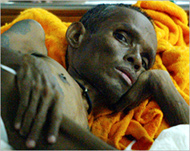New finding may help tackle Aids
A new finding may force a re-evaluation of how to tackle the deadly Aids virus, researchers say.

According to the new finding, within days of infection the Aids virus destroys more than half of the immune cells that might recognise and help fight it, two teams of US researchers reported on Sunday.
Two separate studies in monkeys showed that SIV, the monkey version of the human immunodeficiency virus or HIV, attacks CD4 memory T-cells right away and wipes out more than half of them.
“The findings may require a rethink of strategies to design HIV drugs and vaccines,” Dr Mario Roederer of the National Institute of Allergy and Infectious Diseases and colleagues said in one of two reports published in the journal Nature.
Good model
The findings will be difficult to replicate in people, because most people do not know the moment they are infected with the Aids virus, which gradually destroys the immune system, leaving patients vulnerable to numerous infections.
 |
|
Aids has infected an estimated |
But SIV is a good model and works in a similar way.
Both teams worked with monkeys that they infected with SIV. They watched what happened to their immune cells.
Right away the virus attacked the CD4 T-cells that had the correct configuration for the virus.
Normally during an infection such cells would recognise and latch on to an invader, helping other components of the immune system destroy it.
But HIV is different because it targets the immune system, and the two studies show how quickly it makes it impossible for its victims to launch a defence.
Roederer’s team used new, sensitive tests to show just how the virus moves so quickly.
Peak of infection
“Specifically, 30% to 60% of CD4 memory T-cells throughout the body are infected by SIV at the peak of infection, and most of these infected cells disappear within four days,” they wrote.
“Furthermore, our data demonstrate that the depletion of memory CD4 T-cells occurs to a similar extent in all tissues,” the report said.
|
“Specifically, 30% to 60% of CD4 memory T-cells throughout the body are infected by SIV at the peak of infection, and most of these infected cells disappear within four days” |
“As a consequence, over one-half of all memory CD4 T-cells in SIV-infected macaques are destroyed directly by viral infection during the acute phase – an insult that certainly heralds subsequent immunodeficiency.”
This means any attempt to vaccinate against HIV or to provide efficient treatment must stop this process right away.
Dr Ashley Haase of the University of Minnesota Medical School and colleagues made similar findings. Not only does the virus directly kill the CD4 cells, they found, but it also causes them to commit cell suicide.
There is no cure for HIV infection, which killed more than three million people globally last year and which has infected an estimated 39 million people, according to the United Nations.
Drug cocktails can control the infection but it comes back quickly if they are stopped. More than two dozen vaccines are being tested, but experts do not expect any of them to prevent HIV infection in a substantial number of people.